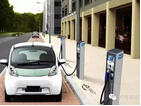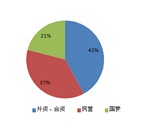Recently, it was pointed out that 2018 new energy vehicles subsidy policy plans to further tighten the accelerated withdrawal of efforts to increase the subsidy access threshold, at the same time, in order to speed up the regulation of the market, local subsidies for new energy vehicles or will be canceled. In view of the current chaos of new energy vehicles subsidies, in addition to local energy subsidies for new energy vehicles may be canceled next year, new energy vehicles subsidy standards are also likely to have a substantial withdrawal, and subsidies for the technical requirements will be improved. Experts point out that this move will speed up the entire new energy automotive industry reshuffle many out of standard car prices, is a good opportunity for the development of low-speed electric vehicles.

The immense market space for low-speed electric vehicles and the upgrading needs of consumers have attracted many traditional auto makers to penetrate, not only in terms of quality and performance, but also on the road of licenses. However, at the same time, some high-speed car manufacturers push products to grab the market, and even the marketing model and the image store also imitate the low-speed electric car manufacturers. There are also high-speed electric cars delisted when the low-speed car is sold and the market is very chaotic. However, the 2018 subsidy policy is likely to rewrite such a situation. With the sudden drop of subsidies for new energy vehicles, apparently slow down the high and low speed manufacturers market integration phenomenon. This will also pull back the trend of high-speed manufacturers' prices or once again form two market camps where high and low speed manufacturers do not cross each other. This is undoubtedly a good move for the development of low-speed electric vehicles.
It is not difficult to see that the market prospects of low-speed electric vehicles will be promising, which is also the development opportunities for many car prices.
















 RCCN WeChat QrCode
RCCN WeChat QrCode Mobile WebSite
Mobile WebSite







